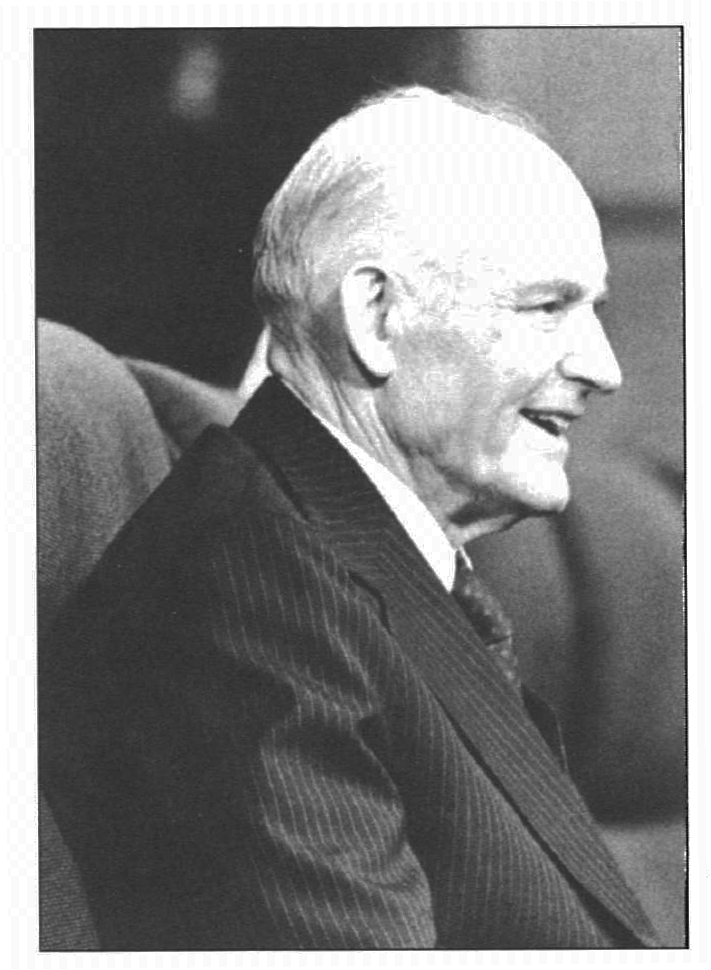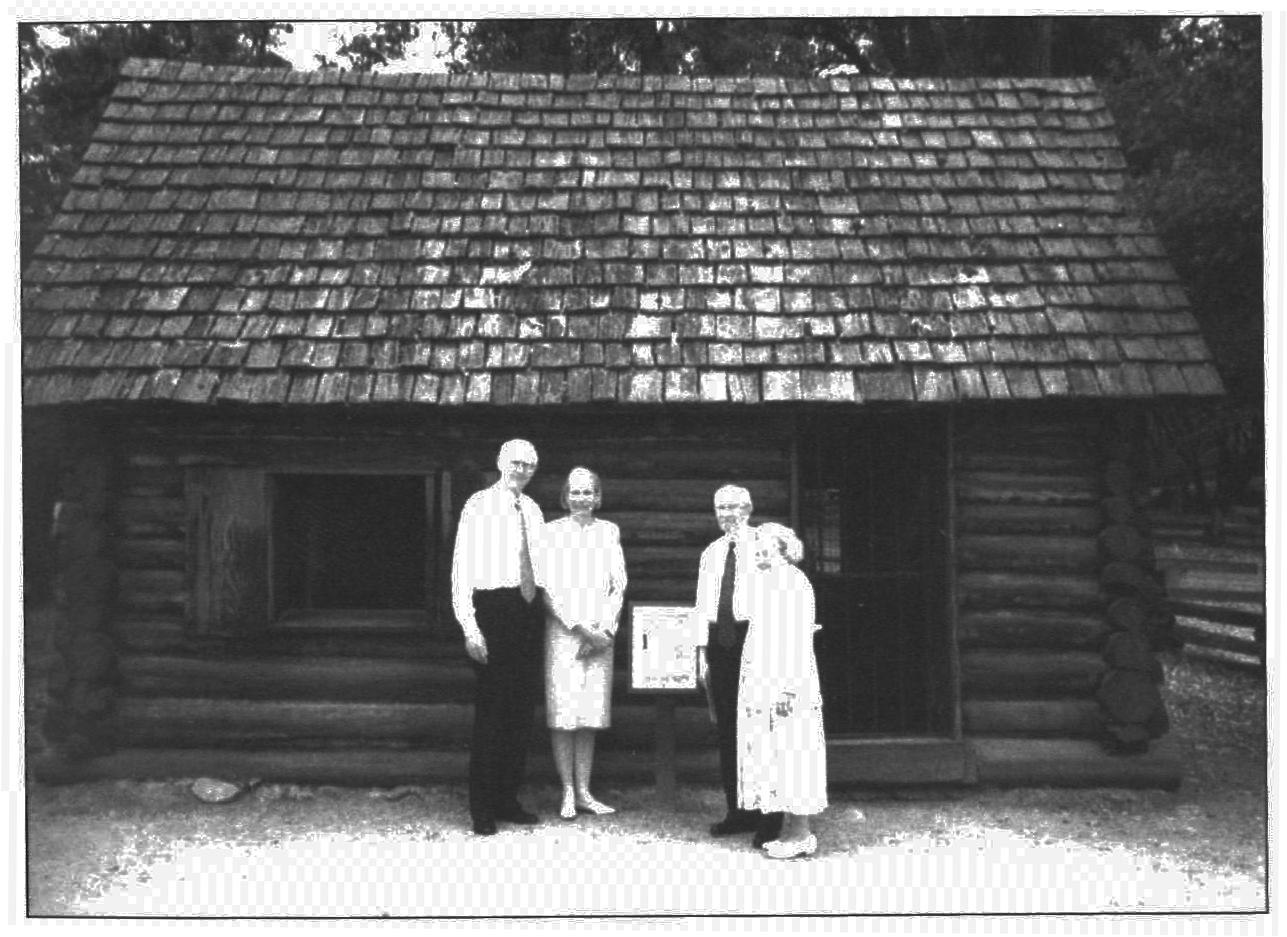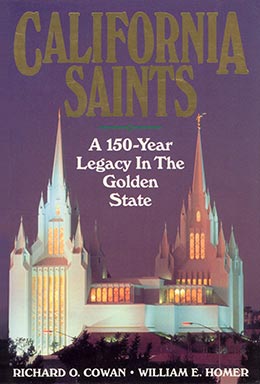California Saints Today and Tomorrow
Richard O. Cowan and William E. Homer, California Saints: A 150-Year Legacy in the Golden State (Provo, UT: Religious Studies Center, Brigham Young University, 1996), 401–10.
As the Church approached the milestone of a century and a half in California, the time seemed right to take stock of what had been accomplished and to look forward to the Saints’ future in the state.
Though the Church and its members had passed through times of trial and challenge, life was now generally good. An eight-year study by the UCLA School of Public Health revealed that “10,000 active Latter-day Saints in California” had “one of the lowest mortality rates ever recorded.” The death rate among high priests who lived the Word of Wisdom was only 22 percent of the mortality rate for middle-aged white males as a whole, and the life expectancy of this LDS group was eleven years longer than that of the general population. [1] These conclusions simply confirmed what many already knew: living the restored gospel of Jesus Christ results in a happy, fulfilling, and healthy lifestyle. California Latter-day Saints were eager to reach out and share with their neighbors what they had.
During the closing decades of the twentieth century, the Church in California continued to grow. By 1990 the state had grown to be nearly ten times more populous than it was in 1920. But the rate of Latter-day Saint growth was nearly twenty times that of the state as a whole, from about four thousand members in 1920 to 725,000 in 1990. The 34-percent Church growth rate during the 1980s was nearly double the 19-percent increase for the state as a whole and significantly higher than Utah’s Church growth rate of 21 percent during the same period. [2] Latter-day Saints had become the next-to-largest faith group in California, second only to the Roman Catholics. Statewide there were twenty-five Latter-day Saints for every one thousand in the population.
By the mid-1990s, California boasted 161 stakes, 15 missions, and over 1,300 local congregations. [3] However, shifting population patterns have caused some urban stakes and wards to be eliminated through consolidation. In more recent years, especially in some urban areas, certain foreign-language congregations once again have become parts of mission districts rather than of stakes.
California’s Contributions
During their century and a half in California, the Latter-day Saints have made a variety of contributions to the Golden State. The arrival of Samuel Brannan’s colony on the Brooklyn tripled the population of the community which would soon grow into the great city of San Francisco. Men from the Mormon Battalion dug the first wells, made bricks, and built the courthouse in San Diego. They also raised the American flag as part of Los Angeles’s first Fourth of July celebration. Brannan published the state’s first newspaper completely in the English language, and a young LDS girl in his colony taught California’s first English-speaking school. Soldiers from the Mormon Battalion played a key role in the discovery of gold, and one of their diaries fixed the exact date of that momentous event. John Horner, the first man to use a harrow in the state, was honored as “California’s first farmer.” The city of San Bernardino had its beginning as a Latter-day Saint colony. In more recent years, a growing LDS presence has provided a stabilizing influence of high morals and family values. Contributions of individual Latter-day Saints to business, politics, education, and cultural life are too numerous to list.
But the Golden State has also made significant contributions to the Church of Jesus Christ of Latter-day Saints. Those contributions have been varied, perhaps beginning when Samuel Brannan taught the Pioneers how to make adobes—a skill that helped the Saints survive during their first winter in the Salt Lake Valley. Mormon Battalion members’ observations of irrigation in the Southwest helped the Saints develop similar projects in the mountains. Gold from California helped finance early development in the Great Basin, just as tithes from faithful California Saints helped support worldwide Church programs a century later. Mormon Battalion pay enabled Captain James Brown to purchase Miles Goodyear’s cattle ranch at the mouth of Weber Canyon, providing a needed source of meat for Utah Pioneers. The first seed wheat in the Great Basin also came from California. For many years, John Horner sent seedlings, especially of fruit trees, to the Saints in Utah.
During the 1880s, California provided a haven for those fleeing from persecutions because of plural marriage. In a similar manner, during the present century, California became the place where Intermountain Saints could go to find economic opportunity. It allowed the Latter-day Saints to have a broader influence than if they had stayed only in the valleys of the mountains. California gave the Church its first experience with establishing stakes in predominantly non-LDS urban areas. In this setting, programs were launched that became important Churchwide. Southern California’s Good Will enterprises set the pattern for the Church’s own Deseret Industries.
California became the home for the largest group of Latter-day Saints in any state or nation outside of Utah. Here the Church built what was at the time its largest temple, in Los Angeles.
In early years the Golden State provided significant experience for several who were or became general Church leaders—Parley P. Pratt, Amasa M. Lyman, Charles C. Rich, George Q. Cannon, Joseph F. Smith, and Moses Thatcher to name just a few.
Likewise during the twentieth century a growing number of General Authorities were called from California. These included Hyrum G. Smith, called as Patriarch to the Church in 1912; Robert L. Simpson, called to the Presiding Bishopric in 1961; Paul H. Dunn, named to the First Council of the Seventy in 1964; and David B. Haight, who became an Assistant to the Twelve in 1970 and one of the Twelve Apostles six years later. Other Californians who became members of the Quorums of the Seventy in the later twentieth century included Ronald E. Poelman (1978), John K. Carmack (1984), Cree-L Kofford and Joseph C. Muren (1991), and Lance B. Wickman (1994). In addition to these, L. Tom Perry, who became an assistant to the Twelve in 1972 and a member of the Twelve in 1974, lived in Sacramento from 1953 to 1962 while serving as controller of a department store chain. Also, Henry B. Eyring, who became a counselor in the Presiding Bishopric in 1985 and a member of the Twelve ten years later, lived in the Bay Area for nearly a decade while teaching at Stanford University’s Graduate School of Business. Of course, heading the list of California’s contributions to Church leadership was Howard W. Hunter, who became an apostle in 1959 and served as president of The Church of Jesus Christ of Latter-day Saints from 1994 to 1995.
One of California’s most important contributions is often overlooked. A revelation given through Joseph Smith speaks of the latter-day Zion being the only place of peace and safety in the midst of widespread calamities and disasters. “With one heart and with one mind,” the faithful from “every nation under heaven” will gather there for refuge (D&C 45:65–69). Some California Saints have a vision of the Golden State as a laboratory to which representatives of many nations have been “gathered” to learn how to live together in peace. [4] With beautiful temples amid the diversity of three of the world’s most oft-visited cities, the California Saints have the potential of becoming a Zion people. Their experience, in turn, can bless the entire world.
A Prophet from California
Upon President Ezra Taft Benson’s death, Howard W. Hunter became the Church’s fourteenth president on 5 June 1994. For over a third of a century he had pursued his career as a father, Church leader, and corporate attorney in Southern California. Then, for another similar time period, he served in the Quorum of the Twelve.
He had learned to relate peaceably and effectively with people of many backgrounds. He was comfortable meeting with Arabs in Egypt, Arabs and Jews in the Holy Land, or with Polynesians and Asians in Hawaii. He created a record number of fifteen stakes in Mexico City on a single weekend and also organized the first Spanish-speaking stake in Los Angeles. “We look upon no nation or nationality as second-class citizens,” affirmed Elder Hunter. [5]
His ministry as an apostle more fully opened the Church to the world and the world to the Church in new ways. His background put him in the forefront of the Church’s transformation from a Utah or American institution to a global one. Elder Hunter’s apostleship was summed up by President Thomas S. Monson: “His mission was marked by monumental events. . . . Truly he was a pioneer, one who, according to Webster, goes before, showing others the way to follow.” [6]
Though he served as Church president for less than a year, President Hunter was able to quickly focus members’ attention to their temples and their Lord. He immediately challenged them to make the temple “the great symbol of your membership” and repeated this theme as he traveled throughout the world. As he had done earlier as a leader in California, he also asked the Saints to be more charitable and forgiving in their dealings with one another. He welcomed those “who have transgressed or been offended” back into the fold, and to those who were “hurt o r . . . struggling and afraid,” he said, “Let us stand with you and dry your tears.” [7]
 President Howard W. Hunter
President Howard W. Hunter
Powerful Prophetic Blessings
After decades of sustained growth, Church membership in California leveled off during the early 1990s. Some Latter-day Saints were among the Californians who left the state to escape from natural disasters, increasing crime, a softening economy, and other changes they regarded as a deterioration in lifestyle. But the future remained bright for the Church in the Golden State. Both Presidents Howard W. Hunter and Gordon B. Hinckley personally journeyed to California where they gave encouragement, inspired counsel, and powerful promises to the Saints.
Only two weeks after being sustained as President of the Church, Howard W. Hunter returned to his old stake in Pasadena—“an especially satisfying moment for him.” [8] He took this occasion to reflect on the unique opportunities and challenges of the Latter-day Saints in his beloved California and to pronounce a blessing on them:
What a marvelous opportunity is yours to live where the Church is generally well regarded and where there is a strong base of those who have similar values and opportunities together. . . . Truly the faithful Latter-day Saints represent the leaven in the loaf of the state of California. Your influence, through righteous living, appropriate community involvement, and effective missionary work, will bless the people who reside within . . . the whole state of California. 1 feel the Church will continue to grow in strength and vitality in this area.
Without doubt there are significant challenges facing the Latter-day Saints, both here and elsewhere in the world. We hope that you will not be overcome with discouragement in your attempts to raise your families in righteousness. . . . If you will diligently work to lead your families in righteousness, encouraging and participating in daily family prayer, scripture reading, family home evening, and love and support for each other in living the teachings of the gospel, you will receive the promised blessings of the Lord in raising a righteous posterity.
In an increasingly wicked world, how essential it is that each of us “stands in holy places” and commits to be true and faithful to the teachings of the gospel of Jesus Christ.
Certainly there continues to be a need in this area to appropriately blend into the gospel and the Church the many diverse nationalities and cultures which have become a part of California. Much positive work has been done in this regard. We hope that you will reach out to your brothers and sisters of every background and circumstance and welcome them in as “fellow citizens with the saints, and of the household of God,” as was said in the book of Ephesians (Eph 2:19).
I repeat, I see the future of the Church in California as bright. Those things which will bring us the peace and happiness we so desire are contained within the teachings of the Master. We encourage you young people present today to be diligent and faithful in living the standards of the gospel, setting an example before your friends and your associates. We trust that you young men and young women are finding appropriate fellowship within the body of the Saints so that you will not be tempted to involve yourself in destructive activities, such as gangs, drugs, sexual immorality, or other things which are not in harmony with the teachings of the gospel.
My beloved brothers and sisters I feel impressed to leave my blessing with you. I bless you that you may feel the love and confidence of our Heavenly Father and the Lord Jesus Christ in your daily lives. I bless you as parents with the confidence to raise your children in faith that they may receive an added measure of strength to avoid the temptations of Satan. I bless you with an increased desire to live your own lives worthy of the privilege of entering the house of the Lord and enjoying the blessings of the temple both for yourselves and for your kindred dead.
That you may live in such a way to merit the eternal promises of the Lord I humbly pray as I leave my witness with you of the reality of the restored gospel of Jesus Christ. [9]
Following Howard W. Hunter’s death in March of 1995, Gordon B. Hinckley succeeded him as President of the Church. Just a few weeks earlier, President Hinckley had spoken to a multi-regional conference at San Jose. He admonished the Saints to take serious thought before moving from California to Utah or other places. He indicated that the Church must continue on in California.
Then, soon after being sustained as the Church’s leader, President Hinckley addressed another multi-regional conference, this time in Sacramento. He reminded his listeners of their heritage. “There are Mormon footsteps over this part of the world, over this part of California,” he maintained. “This is not the first time Mormons have been here. . . . There was Mormon heroism, there was Mormon sacrifice, there was Mormon faithfulness long before any of us came on the scene.” [10]
 Church president Gordon B. Hinckley and area president Loren C. Dunn
Church president Gordon B. Hinckley and area president Loren C. Dunn
with their wives in front of Mormon Battalion cabin at Coloma
During his address at Sacramento, President Hinckley also testified: “I have seen miracles in my time, my brothers and sisters. The greatest miracle of all, I believe, is the transformation that comes into the life of a man or a woman who accepts the restored gospel of Jesus Christ and tries to live it in his or her life.” He then challenged the California Saints to enrich their own lives and to bless others through the gospel. “It is indeed a marvelous work and a wonder which has been brought to pass by the power of the Almighty in behalf of His sons and daughters in such a way that we of this season in His work can serve in a work of salvation in behalf of the whole human family.” After testifying that “the work is true,” President Hinckley concluded: “I leave my blessing upon you that you may find peace and happiness and love in your homes.” [11]
With the blessings of these prophets upon their land and in their hearts, and as significant as their legacy is, California Saints may anticipate an even greater future. Though there are still problems, the Saints again march as pioneers seeking that which is more precious than gold. The long-held dream of California as a “promised land” will be realized more than ever before, and the Golden State Saints, like those who laid some of the state’s foundations 150 years before, will be an integral part of it.
From the small colony aboard the old sailing ship which entered San Francisco Bay 150 years earlier, the California Saints grew to be nearly three-quarters of a million strong. As interesting as their first century and a half was, they turn their faces forward, rather than backward, in anticipation of even greater possibilities the future will yet bring.
Notes
[1] Journal of the National Cancer Institute, 6 December 1989, quoted in Church News, 9 December 1989, 7, and Ensign, February 1990, 80.
[2] Church News, 8 June 1991, 3–4.
[3] 1995–96 Church Almanac (Salt Lake City: Deseret News, 1994), 114.
[4] Ensign, June 1995, 75.
[5] Ibid., June 1979, 74.
[6] Ibid., April 1995, 32.
[7] Ibid., November 1994, 8.
[8] Ibid., April 1995, 26.
[9] Howard W. Hunter remarks at Pasadena Stake conference, 16 October 1994, typescript; see also Church News, 22 October 1994, 3–4.
[10] Church News, 27 May 1995, 3.
[11] Ibid., 5.
